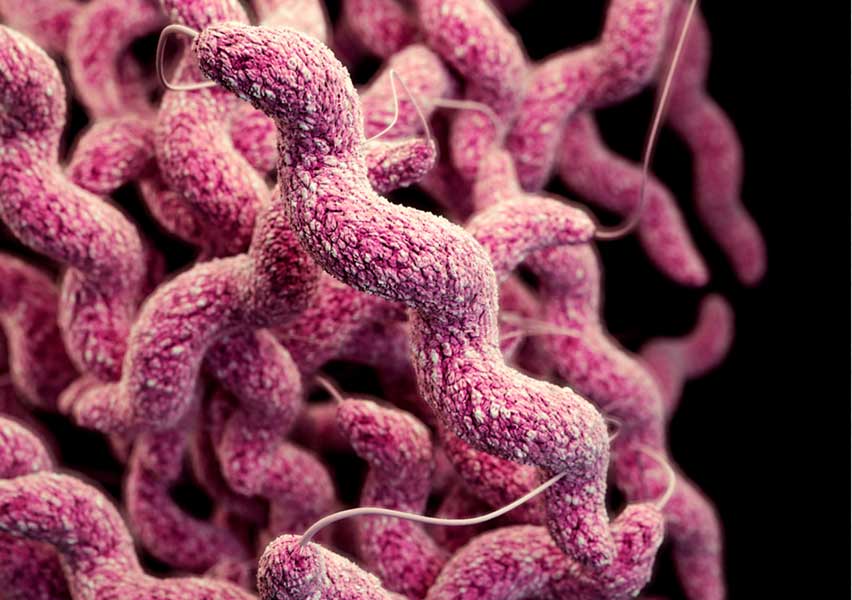Campylobacter
The Campylobacter genus comprises curved, Gram-negative, motile bacteria commonly found in the digestive tract of farm animals such as poultry, cattle, pigs, and sheep. The main pathogenic species in humans is Campylobacter jejuni, a leading cause of bacterial gastroenteritis worldwide, particularly affecting children and travelers to regions with poor sanitation. Infection typically occurs through consumption of contaminated food or water—especially undercooked poultry or unpasteurized milk—or through contact with infected people or animals.
Clinical Features
Campylobacter infection usually develops 2 to 5 days after exposure. Symptoms include watery or bloody diarrhea, fever (ranging from 100.4–104°F / 38–40 °C), abdominal pain, and severe cramping. Nausea, vomiting, headache, and muscle aches are also common. Illness typically lasts about one week.
Complications
Although most infections are self-limiting, some can result in serious complications, particularly in immunocompromised individuals:
- Bacteremia: The bacteria may enter the bloodstream, leading to meningitis, osteomyelitis, septic arthritis, or endocarditis.
- Guillain-Barré Syndrome (GBS): An autoimmune neurological disorder triggered in about 1 in 1,000 cases, causing muscle weakness or paralysis. Recovery may be partial or require assisted ventilation.
- Reactive arthritis: Joint inflammation, typically affecting the knees, which develops days or weeks after gastrointestinal symptoms resolve. May include uveitis and urethritis.
Diagnosis
Diagnosis is typically based on stool analysis using culture or polymerase chain reaction (PCR) testing to detect Campylobacter DNA. In severe cases, blood cultures may be performed to check for systemic spread. Sensitivity testing can help guide appropriate antibiotic therapy.
Treatment
Most cases resolve without specific treatment, and supportive care with oral or intravenous fluids is sufficient. Antibiotic therapy is reserved for severe cases, including bloody diarrhea, high fever, worsening symptoms, or immunocompromised status:
- First-line: Oral azithromycin for 3 days.
- Alternative: Ciprofloxacin, though resistance is increasingly common.
- Systemic infection: Intravenous antibiotics such as imipenem or gentamicin for 2 to 4 weeks.

